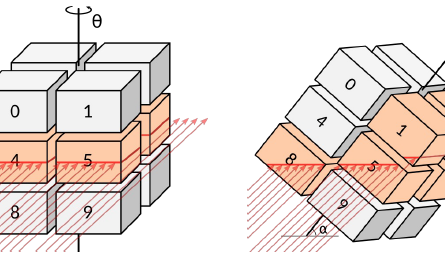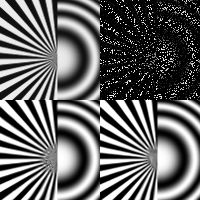
Laminography is a specialized 3D imaging technique optimized for examining flat, elongated structures. Laminographic reconstruction is the process of generating 3D volume from a set of 2D projections that are collected during the laminography experiment. Iterative reconstruction techniques are typically the preferred computational method for generating high-quality 3D volumes, however, these methods are computationally demanding and therefore can be infeasible to apply to large datasets. To counteract these challenges, we require state-of-the-art computational methods that can efficiently utilize high-performance computing resources such as GPUs. In this work, we investigate the integration of the Unequally Spaced Fast Fourier Transform (USFFT) with two optimization methods: the Alternating Direction Method of Multipliers (ADMM) and the Conjugate Gradient (CG). The usage of USFFT addresses non-uniform sampling issues typical in laminography, while the combination of ADMM and CG introduces robust regularization techniques that enhance image quality by preserving edges and reducing noise. We further accelerated the iterative algorithm of USFFT by preprocessing the image into the frequency domain. Compared to the original algorithm, the optimized USFFT method achieved a 1.82x speedup. By harnessing heterogeneous computing and parallel computing with both CPU and GPU, our approach significantly accelerates the reconstruction process while keeping the quality of the generated images. We evaluate the performance of our methods using real-world datasets collected at 32-ID beamline at Advanced Photon Source using Argonne Leadership Computing Resources.

In this paper, we investigate the challenge of image restoration from severely incomplete data, encompassing compressive sensing image restoration and image inpainting. We propose a versatile implementation framework of plug-and-play ADMM image reconstruction, leveraging readily several available denoisers including model-based nonlocal denoisers and deep learning-based denoisers. We conduct a comprehensive comparative analysis against state-of-the-art methods, showcasing superior performance in both qualitative and quantitative aspects, including image quality and implementation complexity.

Finding a point in the intersection of two closed convex sets is a common problem in image processing and other areas. Projections onto convex sets (POCS) is a standard algorithm for finding such a point. Dykstra's projection algorithm is a well known alternative that finds the point in the intersection closest to a given point. Yet another lesser known alternative is the alternating direction method of multipliers (ADMM) that can be used for both purposes. In this paper we discuss the differences in the convergence of these algorithms in image processing problems. The ADMM applied to finding an arbitrary point in the intersection is much faster than POCS and any algorithm for finding the nearest point in the intersection.

Imaging through scattering media finds applications in diverse fields from biomedicine to autonomous driving. However, interpreting the resulting images is difficult due to blur caused by the scattering of photons within the medium. Transient information, captured with fast temporal sensors, can be used to significantly improve the quality of images acquired in scattering conditions. Photon scattering, within a highly scattering media, is well modeled by the diffusion approximation of the Radiative Transport Equation (RTE). Its solution is easily derived which can be interpreted as a Spatio-Temporal Point Spread Function (STPSF). In this paper, we first discuss the properties of the ST-PSF and subsequently use this knowledge to simulate transient imaging through highly scattering media. We then propose a framework to invert the forward model, which assumes Poisson noise, to recover a noise-free, unblurred image by solving an optimization problem.